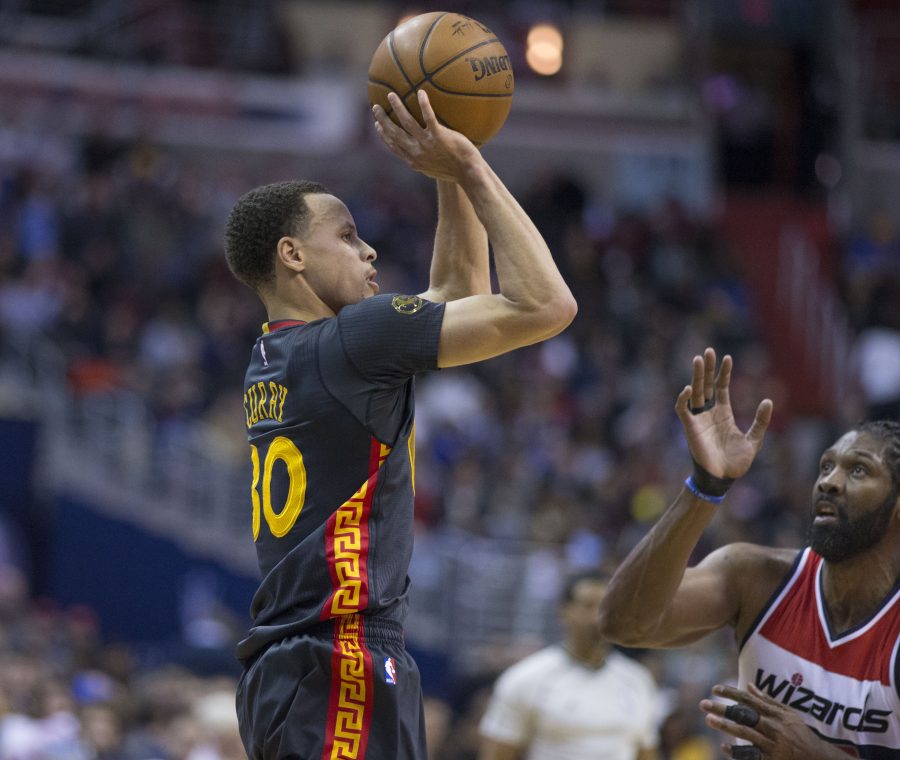One looming, immutable fact weighs on the mind of every NBA fan at the beginning, middle and end of every season. There are 30 teams, and only one of them can end the season with a champagne shower and the Larry O’Brien trophy in hand.
Even this reductive view overstates the median team’s odds. Most teams play the 82 regular season games as a matter of procedure, never sniffing championship contention. In six of the past seven seasons, championship rings have been the exclusive property of teams led by LeBron James or Stephen Curry, which dispatched hopeful usurpers with relative ease. Every U.S. professional sports league hinges upon a similar reality — one champion, many contenders — but in no other league is this truth on display every week.
By the time the last star free agents sign, generally only five or six teams have a real chance at the title. At the beginning of the 2018-2019 season, only Houston, Toronto, Golden State, Philadelphia, Boston, delusional Lakers fans and Dion Waiters could honestly believe they had a shot.
The six or so teams and fan bases at the bottom of the league standings subsist off the fumes of hope suffused by highlight videos of college phenoms like Zion Williamson and Ja Morant. That leaves over 15 teams in the middle — the liminal space between championship and lottery aspirations. From the frustratingly mediocre teams’ fan bases come the shouts of fans to blow up the team and tank.
Before this season, before game five against the Oklahoma City Thunder and before Damian Lillard’s coup de grace from distance, the Portland Trail Blazers had been subject to calls to trade either CJ McCollum or Lillard as some believed the team lacked a path to a championship. In the eyes of the restive, last year’s sweep by the Pelicans validated that perspective, forwarded by a subset of fans that prefer their team operate with the up-or-out impatience of corporate America.
Lillard’s shot and the quick dismantling of the Thunder hasn’t changed the ceiling for this team. It would take a sustained Lillard supernova performance over the next few months to both reach the conference finals and unseat either the Rockets or Warriors, two teams with near-insurmountable talent gaps. But the shot — and the win — brought an emotional payoff for the Trail Blazers franchise after years of patience. Not only did it stay the course and bring back the same core roster that was swept by the Pelicans in the first round last year, but it now has a puncher’s chance at the Western Conference finals, a vaunted accomplishment that would forever pin a historical note on these players and the franchise.
Teams that return year after year with a similar roster, for the meager reward of early playoff exits, and in the hope of a few lucky breaks, are often lambasted. The malaise, discontent and frustration surrounding the Chris Paul-era Los Angeles Clippers or the Joe Johnson-era Atlanta Hawks were contributing factors to those long and prematurely ended epochs. We chronically fail to recognize these consistent achievers. Lillard’s shot epitomizes the virtue of sticking by a core roster in the face of change for change’s sake. He has carved out a singular place as the face of Portland basketball. His shot meant more precisely because, as tanking and roster shakeup have become the norm for teams out of championship contention, Portland remained faithful to its good-not-great roster.
All of the most successful teams in the Western Conference playoffs got to this point without a sustained period of tanking. The Denver Nuggets traded franchise player Carmelo Anthony in 2011 and, with the supposed flotsam they received in return, pocketed two consecutive playoff appearances and have never finished with fewer than 30 wins. Their current roster is a motley collection of well-drafted mid-first-round picks in Jamal Murray, Gary Harris and Malik Beasley, and two of their best players, Monte Morris and Nikola Jokic, were both second-rounders.
A franchise with less gumption and esteem than the Spurs might have traded Kawhi Leonard for a package of first-round picks and young players and dived into a full rebuild. Instead the Spurs welcomed Demar DeRozan and lesser picks to revamp and find themselves back in the playoffs this year, taking the two-seed Nuggets to a game seven.
The Rockets haven’t finished with a record below .500 since 2006 and the Warriors are the result of an inimitable run of draft success and a once-in-a-generation strike of cap space and free agent timing.
When calls to trade away players and rebuild seep into the discourse surrounding a team, it can be easy to succumb to the policy of strategic losing. General managers and owners can peddle hope and buy time as they play the lottery odds each year, but there is an often-overlooked caveat to this that, as with the championship, only one team will hit the jackpot and draft Williamson this year.
Many of this year’s playoff success stories have benefitted from the patience and loyalty of their front office to the players and process. They accrued small talent advantages over time and fielded successful teams without having to suffer the indignity of tanking. In an age when losing has become a strategy, not enough attention has been paid to the organizations finding creative ways to win without enduring the fallow years that some organizations struggle to escape.
Teams like the Suns and Knicks are reminders of the perils of tanking, particularly when a team misses out on high lottery picks year after year. Remaining stuck in the middle is far preferable to remaining stuck at the bottom.
A version of this article appeared in the Monday, April 29, 2019, print edition. Email Dante Sacco at [email protected].

























































































































































